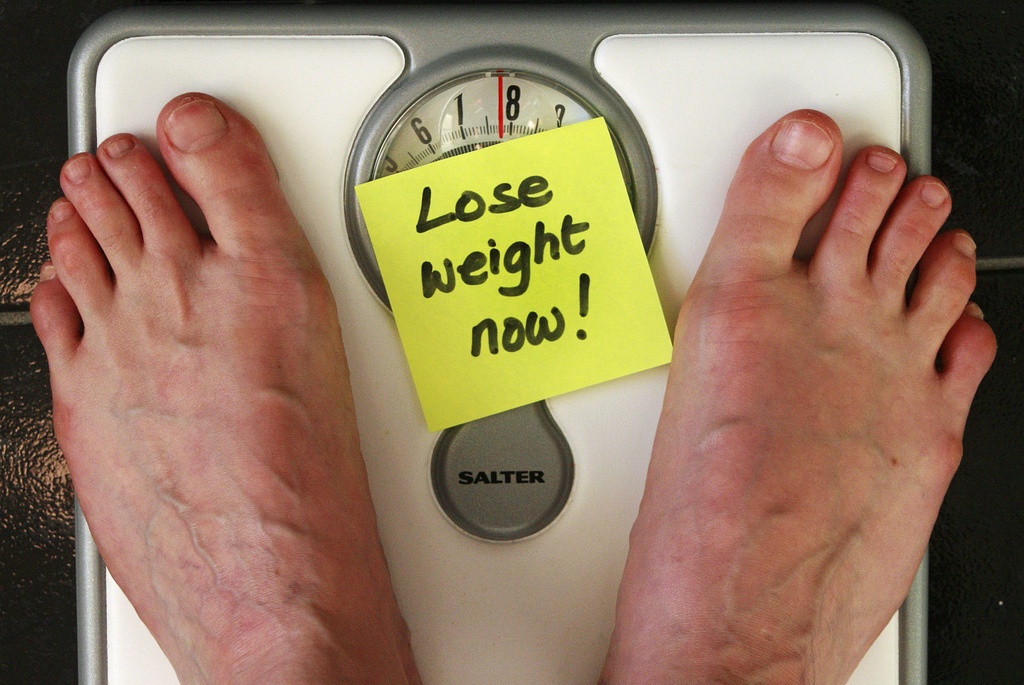Medication is important and you should consult your doctors whenever you want to stop it. The good news is apart from medication, there are other things you can do that are proven to help. First of All, What’s Polycystic Ovary Syndrome? Polycystic Ovary Syndrome occurs when the female hormones estrogen and progesterone are out of balance. Additionally, the body produces too much of the male hormone androgen. This hormonal imbalance causes numerous cysts to grow on the ovaries. In turn, these cysts can cause complications with menstrual cycles, physical appearance, heart health, and fertility. Some of the symptoms of Polycystic Ovary Syndrome include: weight gain, anxiety, irregular menstrual cycles, excessive hair on the face and chest, and depression. [1]
How to Treat Polycystic Ovary Syndrome Without Medication
1. Lose Weight
What does losing weight have to do with Polycystic Ovary Syndrome? Well, the syndrome may cause you to put on pounds. Extra weight increases your blood sugar levels and can cause your menstrual cycle to be irregular. Losing around 10 pounds can help regulate hormone production. Unfortunately, losing weight is more difficult for women with Polycystic Ovary Syndrome. Eating a healthy diet and exercising frequently can help.
2. Eat a High Protein Diet
Source One of the best ways to lose weight with Polycystic Ovary Syndrome is to increase your protein consumption. In a 2011 study, researchers monitored the weight of 57 women with Polycystic Ovary Syndrome for a 6-month period. The participants followed 2 separate diets: At the end of the 6 months, 27 women remained in the study. Those who followed the high protein diet lost more weight, had smaller waistlines, and significantly lowered their blood glucose levels. [2] To follow this dietary plan, first cut out high sugar desserts, soft drinks, and refined carbohydrates. Replace these with whole grains like quinoa, brown rice, and oats, although at a reduced intake. Increase the amount of healthy protein in your diet by eating more hard-boiled eggs, beans, nuts, and other lean proteins like steamed fish.
3. Get More Exercise
Moderate exercise can help reduce the symptoms of Polycystic Ovary Syndrome. This is because physical activity lowers blood sugar levels, preventing insulin resistance. Additionally, it helps you maintain and lose weight. [3] One of the best ways to get more exercise is by walking. Try walking around your neighborhood in the evenings, parking far from store entrances, and taking the stairs instead of the elevator any chance you have.
4. Take Vitamin and Mineral Supplements
Source Some research indicates that increasing vitamin D and calcium can relieve irregular menstrual cycles and lower body weight in women with Polycystic Ovary Syndrome. One study looked at 100 infertile women with the diagnosis who were taking metformin, a medicine commonly used to treat diabetes. A group of 50 women took only metformin. The other group took the same prescription of metformin and in addition, 1,000 mg of calcium and 100,000 IU of vitamin D. The women who took supplements experienced an increase in weight loss and improved menstrual regularity. [4] Before you take on any of these suggestions, make sure to consult your doctor. Remember, medications are often necessary for treating Polycystic Ovary Syndrome. You can follow these tips in conjunction with your prescription plan. In the long run, they can help you improve your health. Featured photo credit: Leah Kelley via pexels.com



